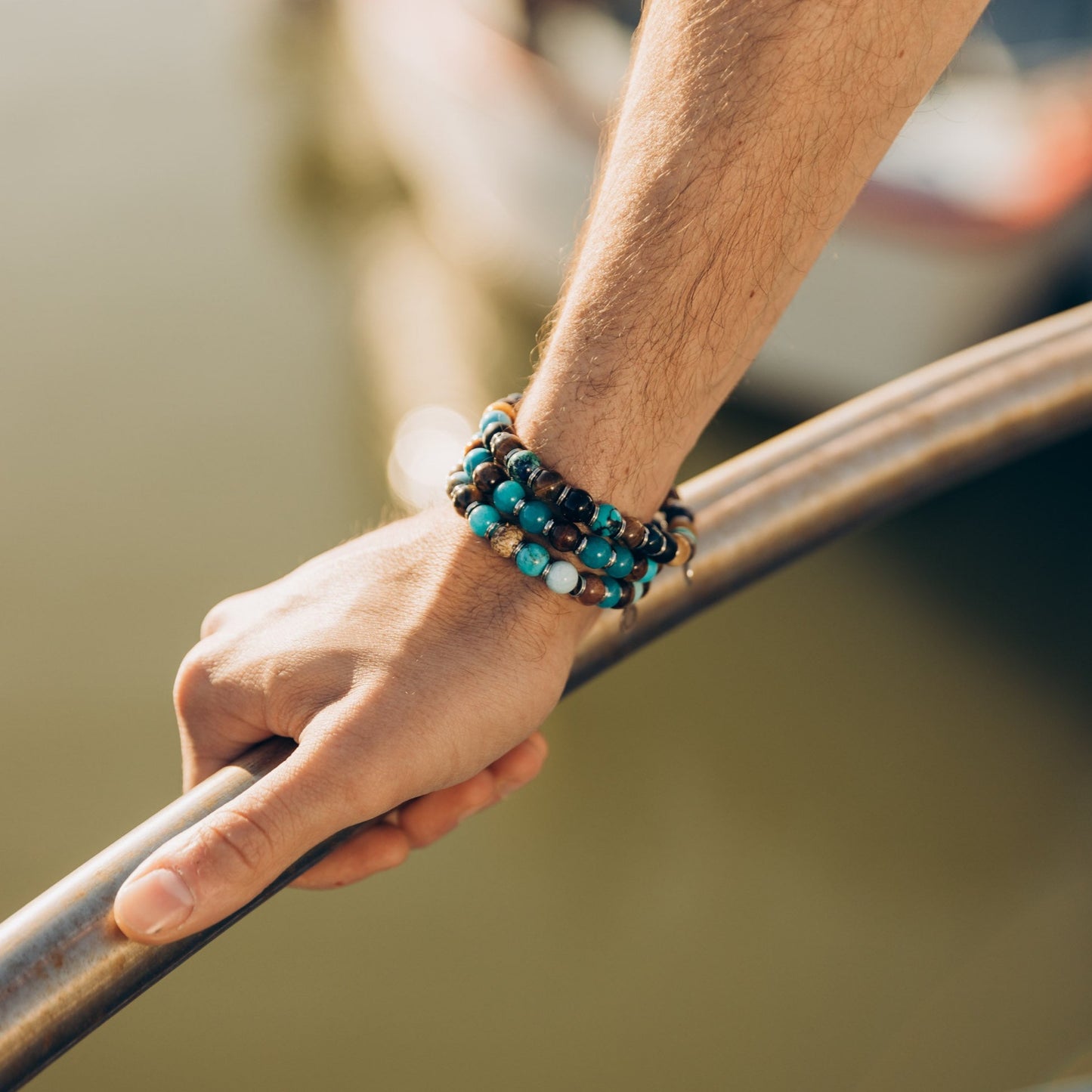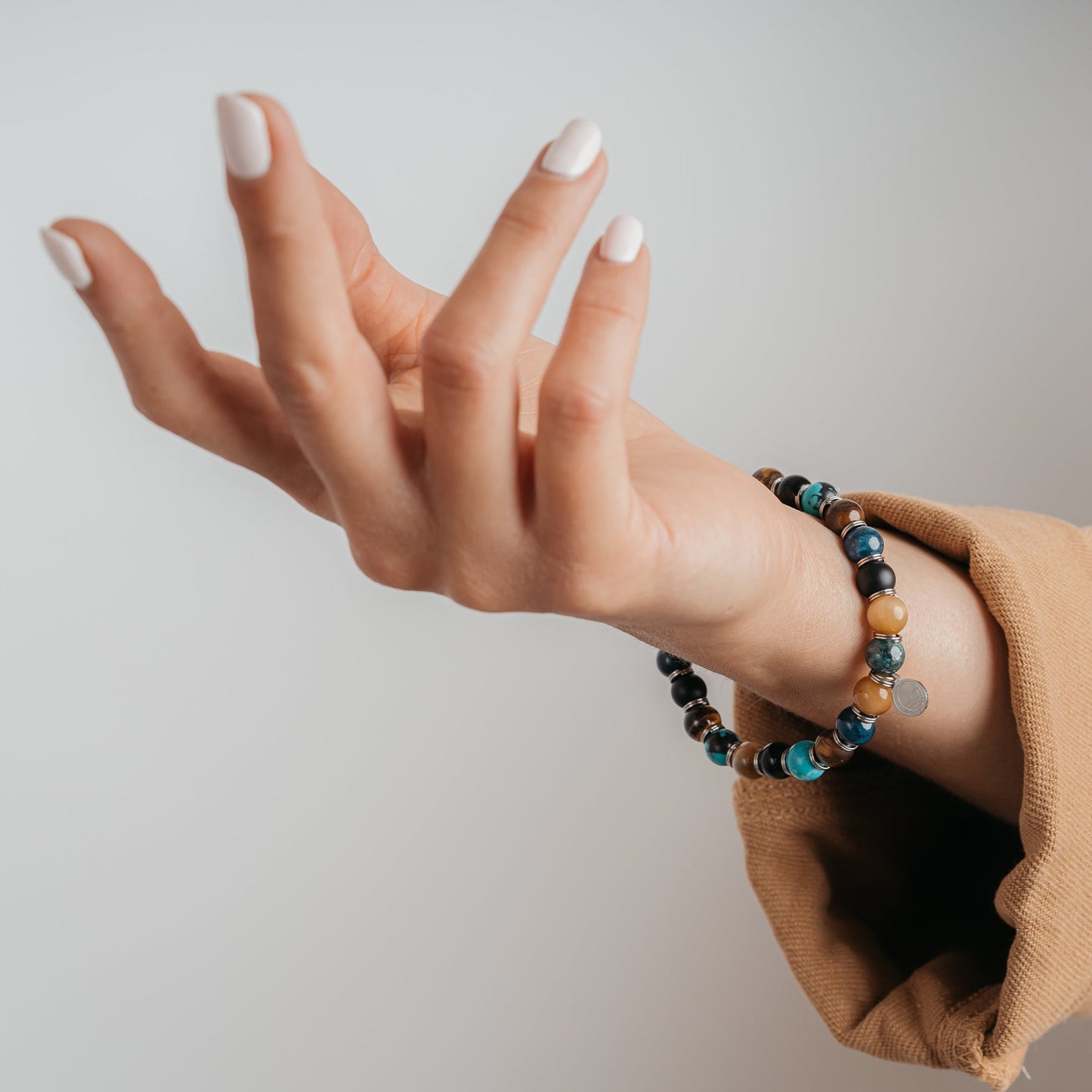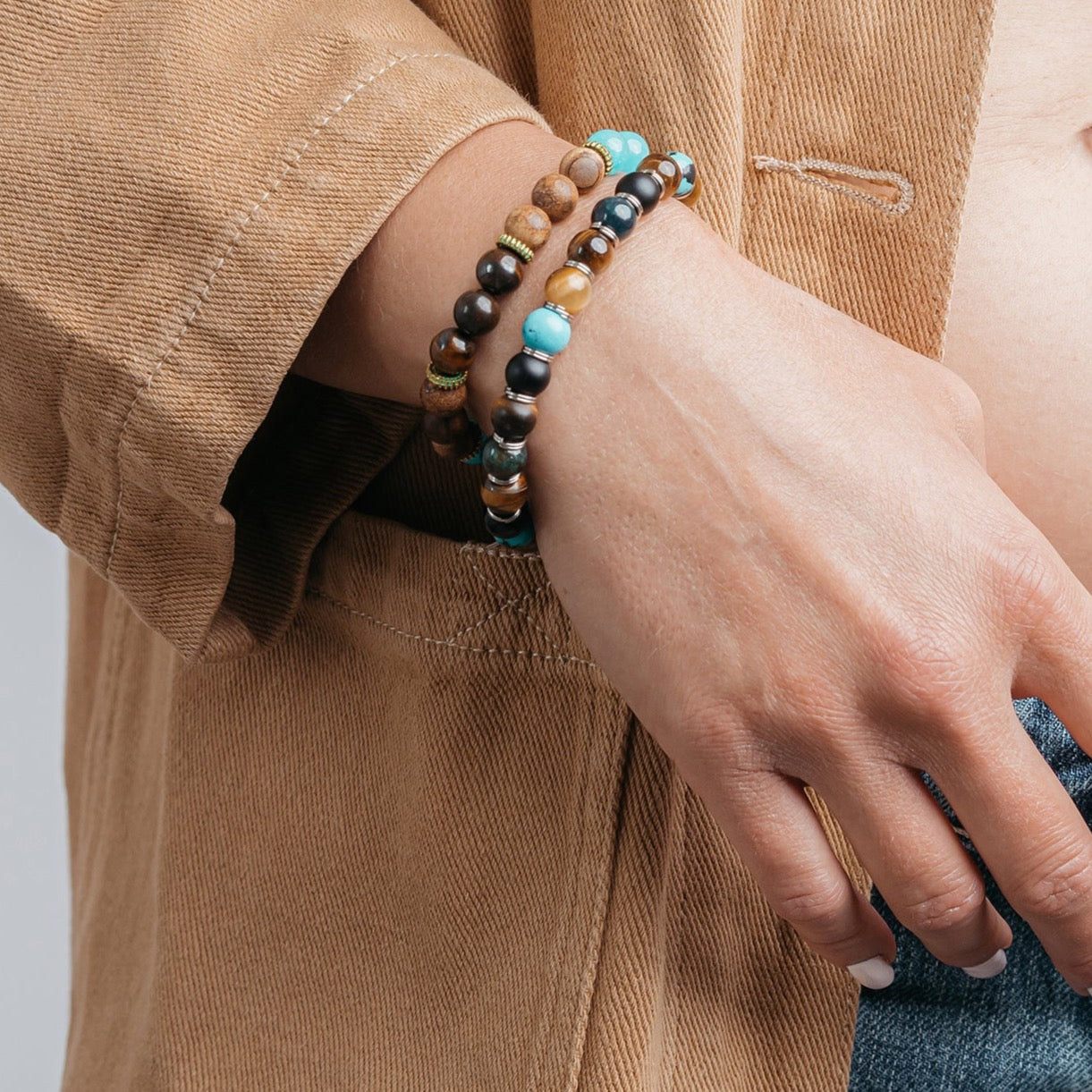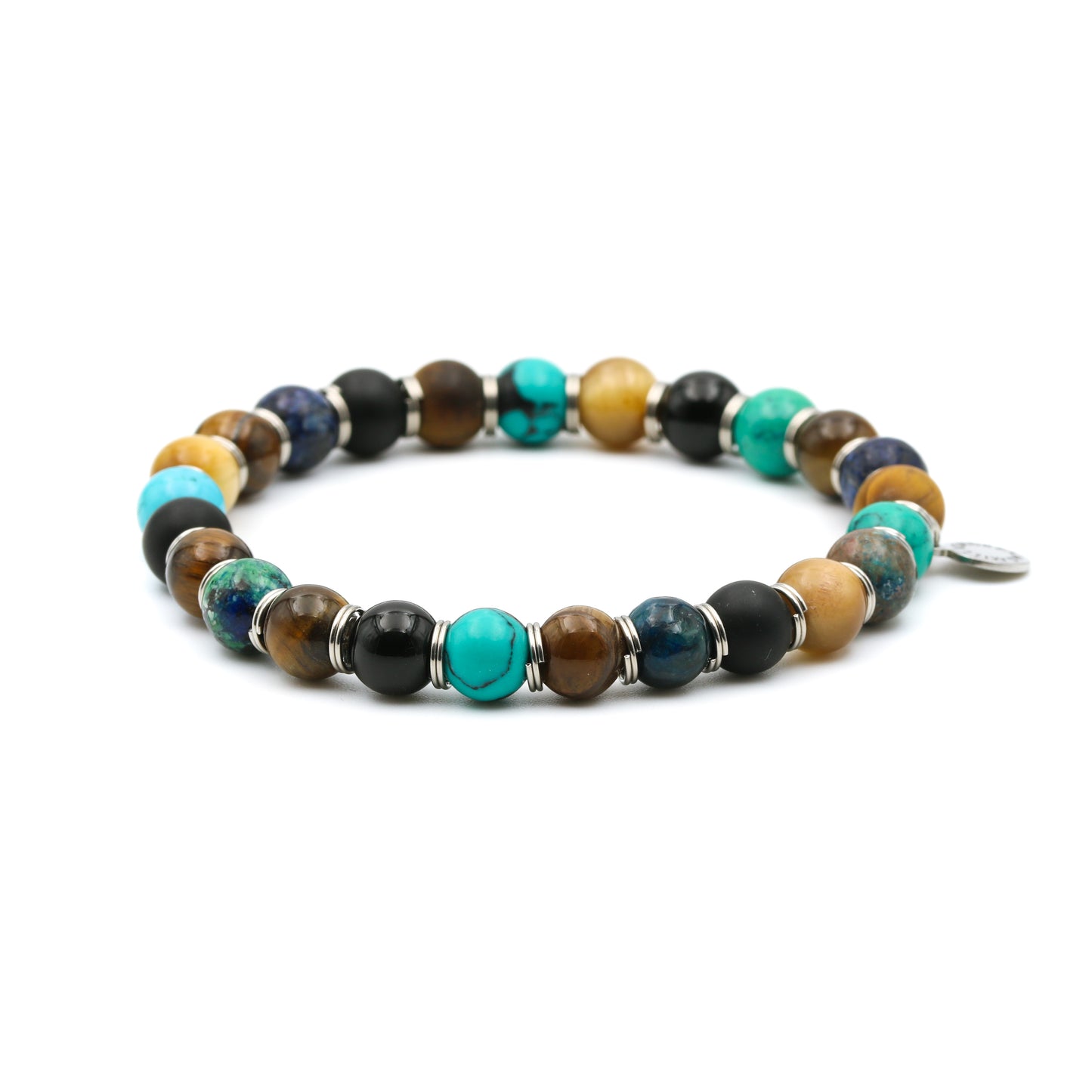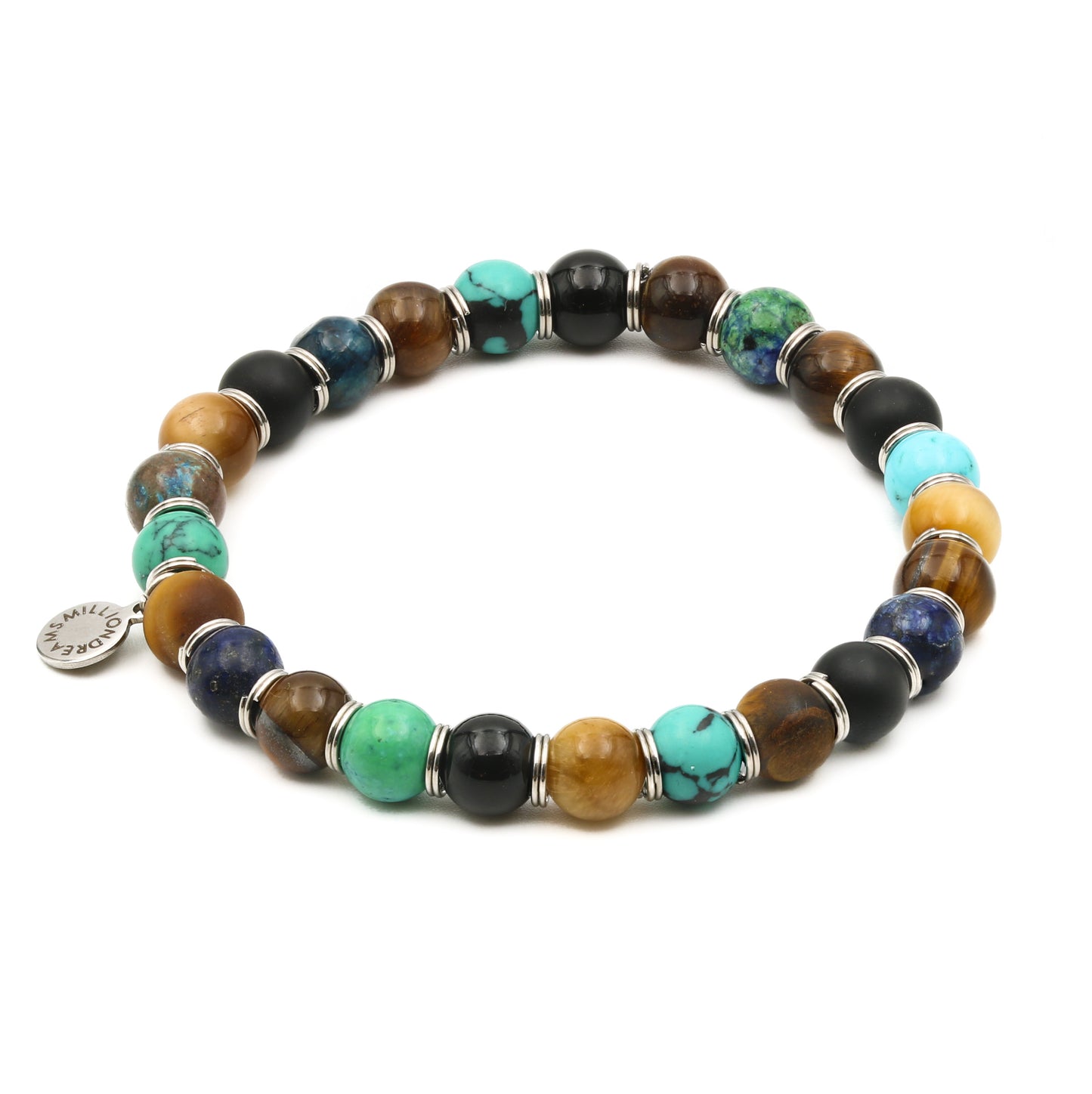Milliondreams Caorle
"Laguna di Caorle" bracelet - ACQUA Collection
"Laguna di Caorle" bracelet - ACQUA Collection
Couldn't load pickup availability
NOTE
NOTE
Tutti i nostri prodotti Million Dreams sono interamente assemblati a mano in Italia, a Caorle. Utilizziamo solo materiali di alta qualità, tra cui pietre preziose, colori specifici e parti in metallo come l'acciaio (Nickel free), l'argento 925 e la placcatura in oro 18 kt. Questi elementi, insieme alla lavorazione artigianale, conferiscono ad ogni pezzo unicità e caratteristiche specifiche che possono includere leggere imperfezioni. Proprio per questa ragione, i colori e le finiture dei prodotti possono variare leggermente rispetto alle immagini campione esposte sul nostro sito o nei nostri cataloghi. Queste variazioni non sono da considerarsi difetti, bensì parte del fascino e dell’autenticità dei nostri articoli, rendendo ogni pezzo unico nel suo genere.
bracelet whose name pays homage to the Caorle lagoon, so loved by Ernest Hemingway , a protected natural area to be discovered. Reflecting its characteristics, this bracelet stands out for its exclusivity and charm in the Million Dreams ethnic style par excellence!
All our Milliondreams products are assembled entirely by hand in Italy, in Caorle. The stones and the steel parts make their imperfections a specific and natural feature.
Composition in elastic nylon thread: EYE OF TIGER + BLACK ONYX + AULITE + CHRYSOCOLLA
+ Nickel free stainless steel.
Stones diameter 8 mm.
Tiger's eye is a variety of quartz containing inclusions of crocidolite , a mineral belonging to the asbestos group. The presence of these isooriented fibers, yellow in color tending to gold, gives the mass a particular effect called chalking . It is mainly used as a gem for jewelry making usually cabochon cut. The mineral comes mainly from South Africa and is appreciated for its particularity.
The name of onyx indicates two completely different types of rocks: siliceous onyx normally black in color streaked with white with SiO 2 composition . n H 2 O, similar to chalcedony (but not quartz , which is crystalline), found in Brazil , Mexico , and other places ; and the calcareous onyx, also called "alabastrite onyx", "etoca onyx" or "Egyptian onyx", which is composed of CaCO 3 (the one from Montaione is brown or light green that of Pakistan ).
Mineralogically silica onyx is a variety of chalcedony , that is quartz in compact microcrystalline masses, with an opaque or semi-opaque, uniform color, covering red-brown tones and the entire range of grays up to black.
Like all varieties of quartz it is very hard (6 to 7 in Mohs scale ).
It is mainly formed in a low temperature and metamorphic phylonian-hydrothermal environment, or, secondarily, in sedimentary rocks where it is presented in a massive and stratified form taking the name of flint , a material widely used by man in prehistory and in ancient times for the preparation of sharp objects and jewelry.
Howlite ( Aulite ): is a mineral of the borate class (borosilicate calcium hydroxide). Its name derives from that of its discoverer, the Canadian chemist, geologist and mineralogist Henry How , who described it for the first time in 1868, indicating its approximate chemical composition. It consists of crystalline aggregates, sometimes in compact nodular masses of large dimensions. Crystals, transparent and tabular, are very rare. Crystallizes by evaporation of aqueous substances in evaporitic deposits. The color is milky white and may have black or brownish veins. Its appearance is opaque with a vitreous luster. Due to its porous nature it is often subjected to blue coloring to imitate turquoise or red to imitate coral. Although it was discovered in Canada, the main sources today are California and Los Angeles (USA), followed by Nova Scotia (Canada), and the Marmara region of Turkey.
Chrysocolla is a useful mineral, although not of great value, for the extraction of copper , of the silicate family. It occurs in stalactite masses, concretions and microcrystalline earthy encrustations and bright green or bluish [3] , but also encrustations or blue-green spherules. The mineral has interesting concretions on azurite and malachite .
The mineral is widespread as an alteration product of other copper ores. [4] In particular it is found as a cap of copper minerals, associated with azurite , malachite , cuprite and represents an important indication for the presence of exploitable copper sources.
Share
